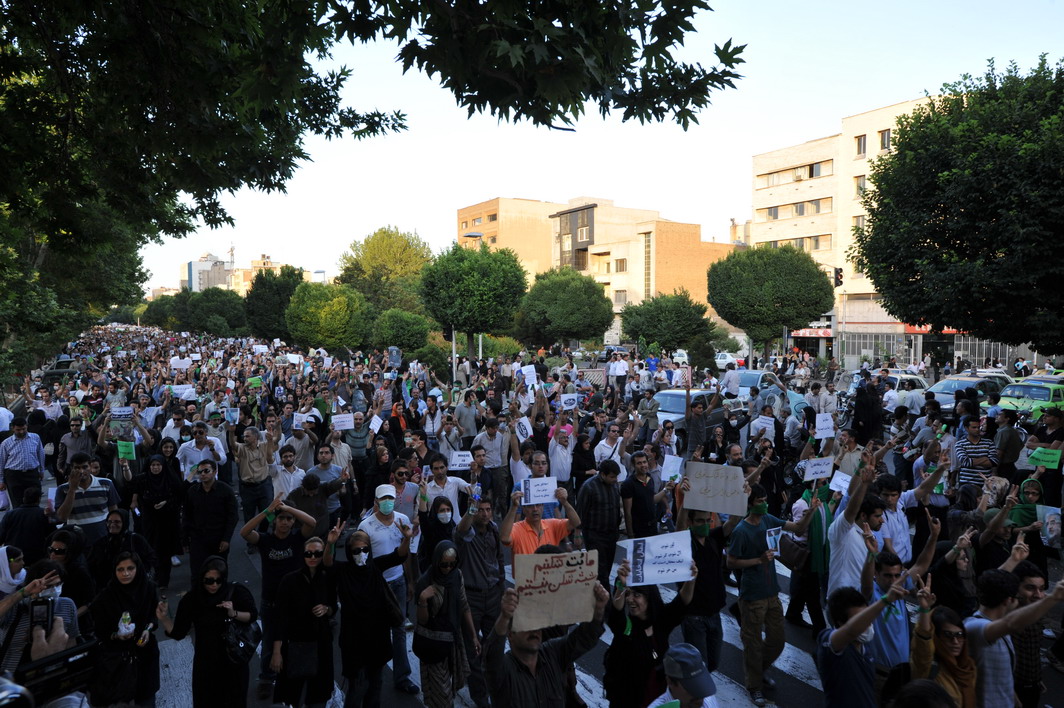An increase in the price of eggs rarely triggers any sort of commotion, let alone nationwide unrest and widespread rioting. But in Iran, a 100 percent price hike of this staple grocery item has become an unlikely catalyst for demands for change, fueled by existing frustration over years of empty promises and failed economic reforms.
In December 2017, Iran witnessed its largest protests since the 2009 Green Movement, during which millions of civilians flooded the streets to contest the allegedly fraudulent reelection of former president Mahmoud Ahmadinejad. Though events of the Green Movement ranked far more politically turbulent, the recent grocery protests are more complicated in their motivations and objectives, reflecting civilian attitudes towards the reformist regime of current president Hassan Rouhani.
The origin of this unrest can be attributed to the dire economic conditions of the Islamic Republic. Some estimates suggest that the country’s youth unemployment rate is about 25 percent, a staggeringly large number considering more than half of Iran’s population is below the age of 35. Iran also faces rampant wealth inequality, exacerbated by President Rouhani’s austere fiscal policies and the nation’s changing cultural norms which now allow the country’s often politically-connected upper class greater latitude to flaunt its wealth.
Persistently low oil prices have further contributed to economic woes, particularly since Iran had enjoyed economic prosperity driven by high oil prices under its previous president. While the lifting of American economic sanctions arranged by the Iran nuclear deal was supposed to bring new prosperity to the country, this growth has been almost entirely oil-based and has disproportionately benefitted those in higher income brackets. These economic shackles are particularly frustrating for a country whose people, especially the sizeable population of urban, highly-educated youth, are increasingly supportive of democratic values and generally hold more liberal views than those of their government.
The brunt of these financial troubles has been felt by those in traditionally conservative rural provinces, where the protests originated. It is suspected that these protests were orchestrated by Iran’s Supreme Leader Ali Khamenei’s conservative bloc to undermine Rouhani’s relatively liberal regime; their efforts backfired spectacularly when the tenor of unrest shifted from grievances against the administration to condemnation of the Revolutionary Guards, Khamenei himself, and Iran’s corrupt political system as a whole. This role reversal is quite compelling: Historically, wealthy liberal urbanites have been among Khamenei’s fiercest critics, attacking his cultural and political oppression, while rural populations have supported the regime and its conservative theological values. Now, however, Iranians from across the political spectrum have found unity in their opposition to the government’s authoritarianism and corruption, concluding that Iran’s internal problems cannot improve so long as the Revolutionary Guards and Khamenei continue ruling with near tyrannical authority. These protests make clear that the source of national frustrations runs deeper than Rouhani or Ahmadinejad.
This short-lived unrest seems to have inspired another movement of civil disobedience opposing Iran’s mandatory hijab-wearing policy, which was enacted in 1979 after the Iranian Revolution. A contentious issue since its inception, the compulsory hijab law is opposed by nearly half of Iran’s population, according to a recent government poll. Issues that lie at the intersection of feminism and Islam are not new to many in Western democracies, but the “Girls of Enghelab Street” protests, named after the location of the first act of rebellion in late January, represent the most significant public challenge to the policy since its conception. Women in cities throughout Iran have been publically removing their head coverings and waving them around like flags in protest of the law. In response, 29 people have been arrested, including the instigator and her 19-month-old baby. Though some prominent conservative figures, such as Iran’s Attorney General Mohammad Jafar Montazeri, have dismissed the displays of civil disobedience as childish, misguided, and instigated by the West, they seem to have struck a chord with many Iranians, especially those who believe Rouhani’s administration has done nothing more than to pay lip service to the women of the republic.
Those hoping for radical reform in the near future will likely be disappointed. Khamenei and his establishment’s power is deeply entrenched and often suppresses opposition through violence, discouraging Iran’s middle class and intellectual community from mobilizing public opposition. Khamenei has unilateral power to declare war, dismiss leaders of the judiciary, dictate military strategy, and determine state media messaging—rendering citizens powerless to effect real change.
The role of foreign policy is likely to be critically important in any potential developments as well. President Trump’s lauding of the protestors via Twitter was likely a major reason for the regime’s brutal putdown of the general protests, since Iran’s ruling clerics have claimed foreign support for the unrest. Furthermore, President Trump’s populist instincts run contrary to policy experts’ advice to strengthen commercial ties with Iran. He has only grudgingly extended the 2015 Iran Deal this past December and has stated his intent to let it expire unless US allies in Europe can fix the deal’s “terrible flaws.”
In the best case, these protests will have sown the seeds for genuine reform in the country’s future. But at the very least, these protests have signaled the changing politics and ideals of ordinary Iranians. There has long been tension between Iran’s relatively progressive population and its deeply conservative ruling clerics—as the New York Times put it, there has long been tension between the Islamic and the republic in the Islamic Republic of Iran. It always seems that the latest set of protests will be the tipping point that brings lasting change to the country, but it is overly simplistic to conceptualize political progress in Iran as a binary between the status quo and a completely secular democracy. Even if dramatic changes to the Guardian Council remain far off, given current political developments, it is possible that Rouhani will make concessions to women or reconsider his austerity policies. For citizens of Iran faced with the practical tasks of buying groceries and deciding what to wear, perhaps that is enough. Photo
